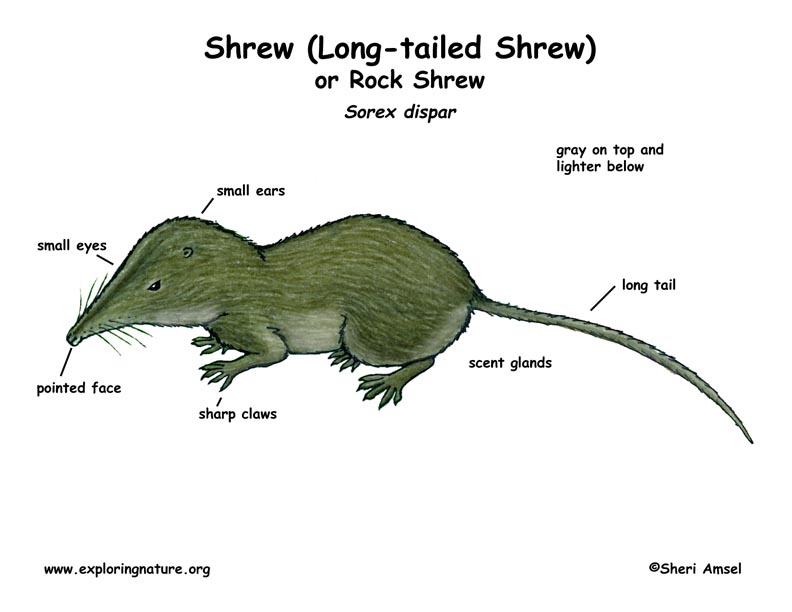

Shrews are found in Africa, Asia, Europe, North America and northern South America.
They are found in every type of habitat; forests, fields, wetlands and scrublands.
There are more than 300 species of shrew. They are NOT rodents, but in a group all their own. Shrews range in size from the smallest mammal in the world (the North American Pygmy Shrew) weighing in at 1/10 of an ounce (the size of your thumbnail) to the largest in North America, (the Northern Short-tailed shrew) which weighs 1 ounce. Shrews have brown fur, short or long tails, and pointed faces. They have good hearing and also use a kind of radar called, echolocation to find their way in the dark (bats use this too).
They are active at night (nocturnal) when they hunt for prey.
Though shrews are very small, they are very aggressive mammals, going after prey that are bigger than they are. They are carnivores and need to eat their own weight in meat every day. Because of this, they cannot hibernate in winter but must keep eating. They eat insects, worms, snails, slugs, mice and other shrews. Short-tailed shrews have a poison (venom) in their saliva that helps them kill larger prey.
Predators include owls, foxes, bobcats and house cats.
Female shrews are pregnant for about 3 weeks (gestation) and have about 6 babies. They have 2-4 litters a year between March and September.
They only live 1-2 years in the wild.
When you research information you must cite the reference. Citing for websites is different from citing from books, magazines and periodicals. The style of citing shown here is from the MLA Style Citations (Modern Language Association).
When citing a WEBSITE the general format is as follows.
Author Last Name, First Name(s). "Title: Subtitle of Part of Web Page, if appropriate." Title: Subtitle: Section of Page if appropriate. Sponsoring/Publishing Agency, If Given. Additional significant descriptive information. Date of Electronic Publication or other Date, such as Last Updated. Day Month Year of access < URL >.
Amsel, Sheri. "Shrew" Exploring Nature Educational Resource ©2005-2024. December 15, 2024
< http://www.exploringnature.org/db/view/Shrew >

